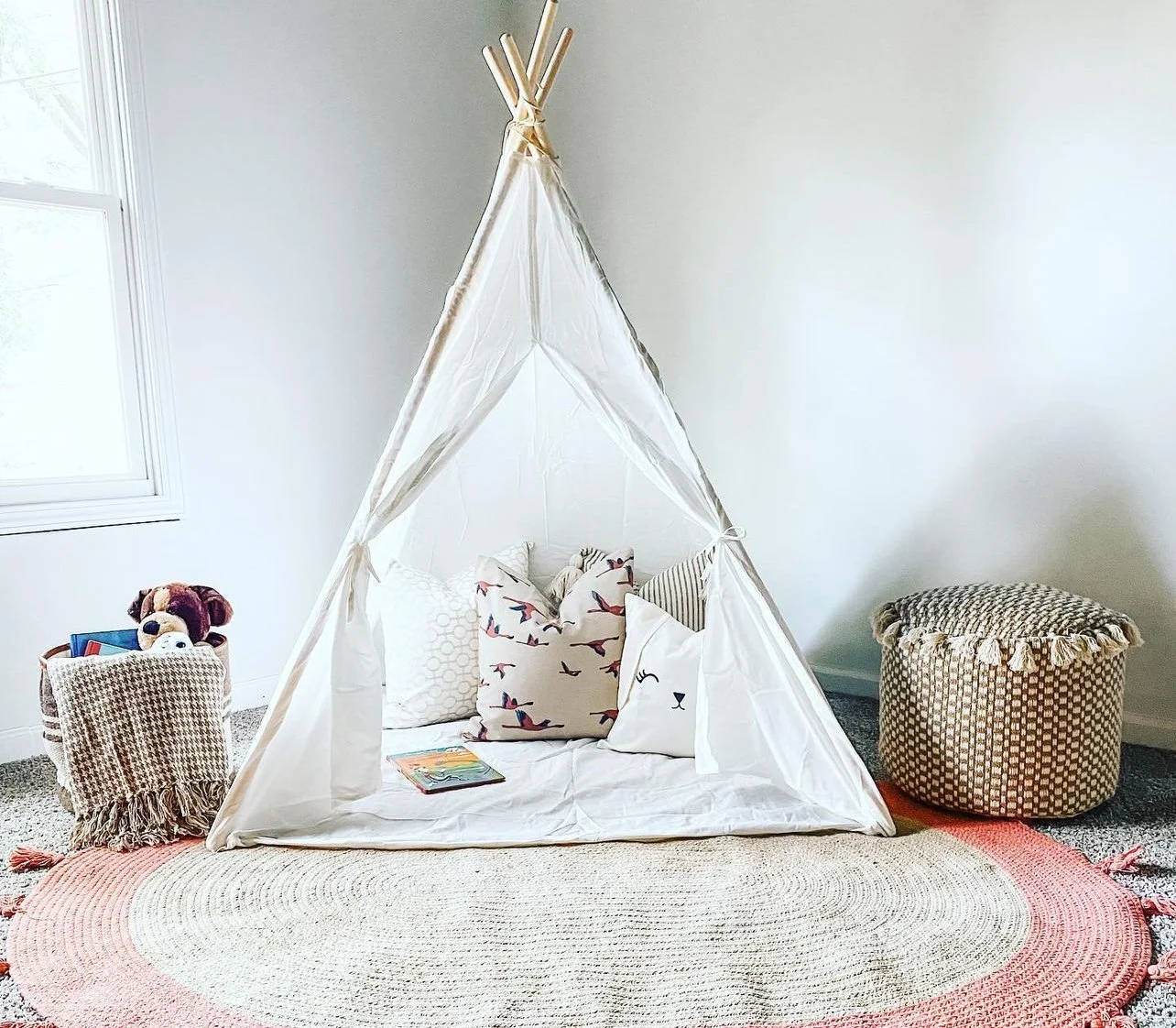Designing the Perfect Playroom for Your Kids: A Comprehensive Guide by Lemondrop Home
Designing a playroom for your children is one of the most delightful and rewarding projects you can undertake as a parent and interior designer. A well-designed playroom not only provides a dedicated space for your kids to play and explore but also encourages creativity, learning, and growth. At Lemondrop Home, we specialize in creating magical and functional spaces for families in the Kansas City metro area. In this guide, we’ll delve into the essential elements of creating the ultimate playroom, from choosing the right colors and furniture to ensure safety and promoting organization.
Understanding Your Children’s Needs
Before you start designing, it’s crucial to understand the unique needs and preferences of your children. Consider their ages, interests, and the types of activities they enjoy. Younger children might need space for activity play and sensory experiences, while older kids may require areas for art, reading, or building projects.
Observing Play Patterns: Spend some time observing how your children play. Do they prefer solitary activities or group play? Are they more inclined towards physical activities like climbing and running, or do they enjoy quiet activities like reading and drawing? Understanding these patterns will help you create a space that caters to their preferences.
Involving Your Kids in the Design Process: Involving your children in the design process can be incredibly beneficial. It not only makes them feel included but also ensures that. the playroom reflects their tastes and interests. Let them choose colors, themes, and even some of the furniture pieces. This way, the playroom becomes a space they truly love and feel connected to.
At Lemondrop Home, we believe in fostering a collaborative design process. We work closely with families to ensure that every playroom we create is tailored to the specific needs and desires of the children who will be using it.
Choosing the Right Colors
Colors play significant role in influencing mood and behavior. For a playroom, you want to choose colors that are vibrant and stimulating, yet not overwhelming. Here are some tips for selecting the perfect palette:
Bright Cheerful Hues: Bright colors like yellow, green, blue, and red are excellent choices for a playroom. They create a lively and energetic atmosphere that can stimulate creativity and playfulness. However, be mindful of using too many bold colors, which can be overstimulating. Balance bright hues with softer tones to create a harmonious space.
Thematic Color Schemes: Consider using a theme to guide your color choices. Popular themes for playrooms including outer space, under the sea, jungle safari, and fairy tale kingdoms. A themed playroom can be visually captivating and inspire imaginative play. Use colors that align with the theme to create a cohesive look.
Accent Walls and Decals: Accent walls are a great way to add a splash of color without overwhelming the space. You can use a bold color on one wall and keep the rest neutral. Wall decals and murals are also fantastic for adding visual interest and can easily be changes as your child’s interests evolve.
Selecting the Right Furniture
Furniture is a crucial element in a playroom. It needs to be functional, durable, and appropriately sized for your children. Here are some key pieces to consider:
Multi-Functional Furniture: Opt for furniture that serves multiple purposes. For example, a storage bench can provide seating as well as a place to store toys. A play table with built-in storage can be used for arts and crafts, building projects, and more. Multi-functional furniture helps maximize the use of space and keeps the playroom organized.
Comfortable Seating: Include a variety of seating options to accommodate different activities. Bean bags, floor cushions, and small chairs are perfect for reading nooks and relaxation areas. Ensure that the seating is comfortable and easy for kids to move around.
Safe and Durable Materials: Children’s furniture should be sturdy and made from safe, non-toxic materials. Avoid furniture with sharp edges and opt for rounded corners. Look for pieces that are easy to clean, as playrooms can get messy quickly.
Local Sourcing: At Lemondrop Home, we prioritize sourcing our furniture from local vendors in the Kansas City metro area. This not only supports the local economy but also ensures that we have access to high-quality, customizable options that can be tailored to your child’s needs and preferences.
Creating Zones for Different Activities
A well-designed playroom should have distinct zones for various activities. This helps keep the space organized and allows children to engage in different types of play without interfering with each other.
Activity Play Area An activity play area is essential for physical activities. Include items like a small indoor slide, climbing wall, or soft play mats. This zone should have plenty of open space for running, jumping, and other active games.
Creative Corner: Designate a corner for arts and crafts, building projects, and other creative activities. Provide a sturdy table and chairs, along with ample storage for art supplies, building blocks, and other materials. Ensure that the area is well-lit and easy to clean.
Reading Nook: A cozy reading nook encourages a love of books and quiet time. Include a small bookshelf, comfortable seating, and soft lighting. Add some cushions and blankets to create a snug inviting atmosphere.
Imaginative Play Zone: Imaginative play is crucial for cognitive development. Create a space for dress-up, role-playing, and other imaginative activities. Include a costume rack, play kitchen, dollhouse, or other items that inspire pretend play.
Technology Integration: While we encourage limiting screen time, incorporating technology thoughtfully can enhance learning and play. Include a smart board or tablet for educational games and interactive learning. Ensure that this zone is separate from the more physically active areas to maintain balance.
Ensuring Safety and Accessibility
Safety is paramount in a playroom. Here are some key considerations to keep in mind:
Childproofing: Ensure that the playroom is throughly childproofed. Cover electrical outlets, secure heavy furniture to the wall, and keep small or hazardous items out of reach. Use safety gates if necessary to prevent access to stairs or other dangerous areas.
Soft Surfaces: Use soft flooring materials like carpet, foam tiles, or rugs to cushion falls and provide a comfortable play surface. Avoid hard, slippery floors that can lead to injuries.
Easy Access: Arrange furniture and storage in a way that allows children to access their toys and materials easily. Low shelves and bins enable kids to find and put away items independently, promoting organization and responsibility.
Storage Solutions
Effective storage solutions are essential for keeping the playroom tidy and organized. Here are some ideas:
Open Shelving: Open shelving allows children to see and access their toys easily. Use baskets and bins to keep smaller items organized. Label the bins with pictures or words to help kids learn where everything belongs.
Storage Benches: Storage benches provide both seating and storage space. They are perfect for storing larger items like stuffed animals, pillows, and blankets.
Wall Storage: Utilized wall space for additional storage. Install shelves, pegboards, and hooks to keep frequently used items within easy reach. Wall-mounted storage also helps free up floor space for play.
Custom Solutions: Lemondrop Home offers custom storage solutions tailored to your specific needs. From built-in cabinets to uniquely designed shelving units, we can create storage options that maximize space and enhance the functionality of your playroom.
Personalizing the Space
Personal touches make the playroom feel special and unique to your children. Here are some ideas for adding personalization:
Displaying Artwork: Frame and display your children’s artwork on the walls. This not only adds color and character to the room but also boosts your child’s self esteem and pride in their creations.
Customized Decor: Include items that reflect your children’s interests and personalities. Customized name signs, themed bedding, and favorite toys can make the play room feel like their own special space.
Rotating Toys: To keep the playroom fresh and engaging, rotate toys periodically. This prevents boredom and encourages to explore different types of play. Store unused toys in a separate area and switch the out every few months.
Incorporating Technology
In today’s digital age, incorporating technology into the playroom can be beneficial, as long as it’s done thoughtfully. Here are some way to include technology in a balanced way:
Educational Devices: Incorporate educational devices like tablets or interactive learning boards. Ensure that screen time is balances with our types of play and that content is age appropriate and educational.
Interactive Toys: Interactive toys that combine physical play with digital elements can be engaging and educational. Look for toys that encourage problem solving, creativity, and active play.
Music and Audiobooks: Include a music player or smart speaker for playing music, audiobooks, and educational content. Music and stories can enhance playtime and provide a soothing background for quieter activities.
Smart Lighting and Climate Control: Consider integrating smart lighting and climate control systems. These can create a more comfortable and adaptable environment, adjusting light and temperature to suit different activities and times of day.
Designing for Growth
As your children grow, their needs and interests will change. Designing a playroom that can evolve with them ensures that the space remains functional and engaging over the years.
Flexible Furniture: Choose your furniture that can adapt to your child’s changing needs. Adjustable tables and chairs, modular storage units, and convertible pieces are excellent choices.
Neutral Base: Opt for a neutral base for larger elements like walls and flooring. This allows you to easily update the decor and accessories as your child’s interests change without having to redecorate the entire room.
Future-Proof Zones: Design the playroom with future needs in mind. For example, a play area can later turn into a homework station, and a reading nook can become a gaming or lounging area.
Local Expertise: Lemondrop Home has extensive experience in designing flexible, future-proof spaces for families in Kansas City metro area. We understand the local lifestyle and needs allowing us to create playrooms that grow with your children and remain functional for years to come.
Lemondrop Home: Your Partner in Creating the Perfect Playroom
At Lemondrop Home, we specialize in transforming ordinary spaces into extraordinary playrooms that inspire creativity, learning, and joy. Based in the Kansas City metro area, we offer a personalized approach to design, ensuring that each playroom reflects the unique needs and preferences of your family. Here is how we can help:
Personalized Consultation: We start with a personalized consultation to understand your vision, your children’s needs, and the space available. Our team of experienced designers listens to your ideas and provides expert advice to create a tailored plan that aligns with your goals.
Custom Design Plans: Based on our consultation, we create a custom design plan that includes detailed layouts, color schemes, furniture selections, and storage solutions. Our designs are not only aesthetically pleasing but also highly functional and adaptable.
Conclusion
Designing the perfect playroom for your kids is a fun and fulfilling project that requires thoughtful planning and creativity. By understanding your children's needs, choosing the right colors and furniture, creating distinct activity zones, ensuring safety, and incorporating effective storage solutions, you can create a space that is both functional and magical. At LemonDrop Home, we are dedicated to helping families in the Kansas City metro area create playrooms that inspire and delight.
With our personalized approach, local expertise, and commitment to quality, you can trust us to transform your vision into reality. Contact us today to start designing the playroom of your dreams and give your children a space where they can learn, grow, and thrive.










